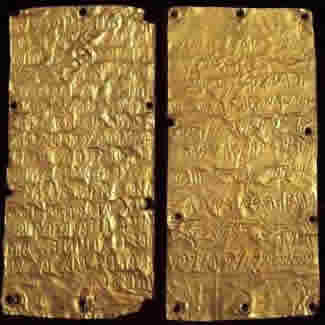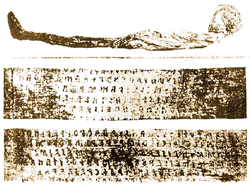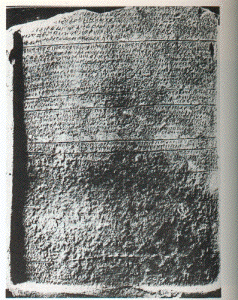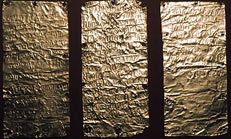|
Since the Etruscans left no literary works behind, each fragment
of their language found on various artifacts is valuable.
The longest Etruscan text known to date is the Liber Linteus
of Zagreb a linen cloth found wrapped around a mummy
containing approximately 1200 words. All lines are oriented
from right to left but occasionally a word was broken off
and the rest of this word placed above the line, from left
to right. A similar sample of Etruscan writing is the Tile
of Capua, which has sixty-two engraved lines utilizing
the same process of Bustrophedic as the Liber Linteus. The
word bustrophedic stems from Greek “buos” (ox)
and “stroph” (multitude), and is used to describe
ancient writing that went alternatively from right towards
left or from high to low and vice versa. One of the most remarkable
remnants of Etruscan language is the three famous inscribed
gold foils called The Pyrgi Lamellae. The most important
part of this trilogy is the bilingual pair, one foil in Etruscan
and another in Phoenician, which both record the dedication
to a Goddess called Astarte in Phoenician and Uni in Etruscan.
Lacking full and varied texts, scholars attempting to compile
a vocabulary have had to work with bits and pieces. Despite
the discovery of over 10,000 inscriptions, only 200 useful
words have been identified. (rm.it; Hamblin, 40-43)

The Pyrgi Lamellae: Etruscan & Phoenician Panels
|

Mummy & Liber Linteus of Zagreb

Tile of Capua

The Pyrgi Lamellae
|







